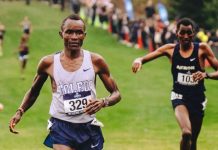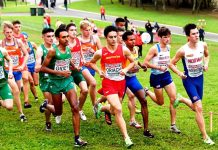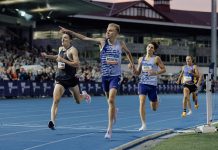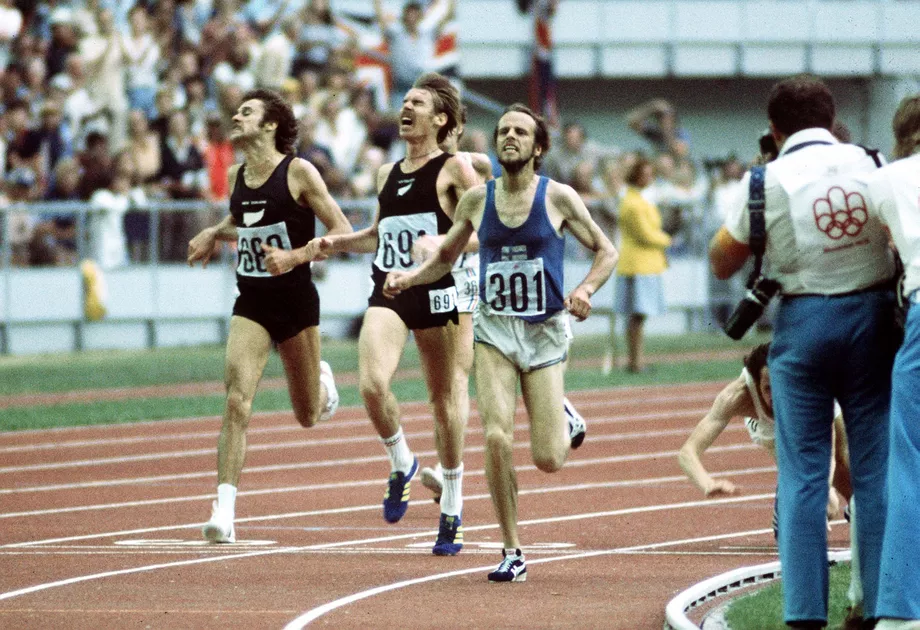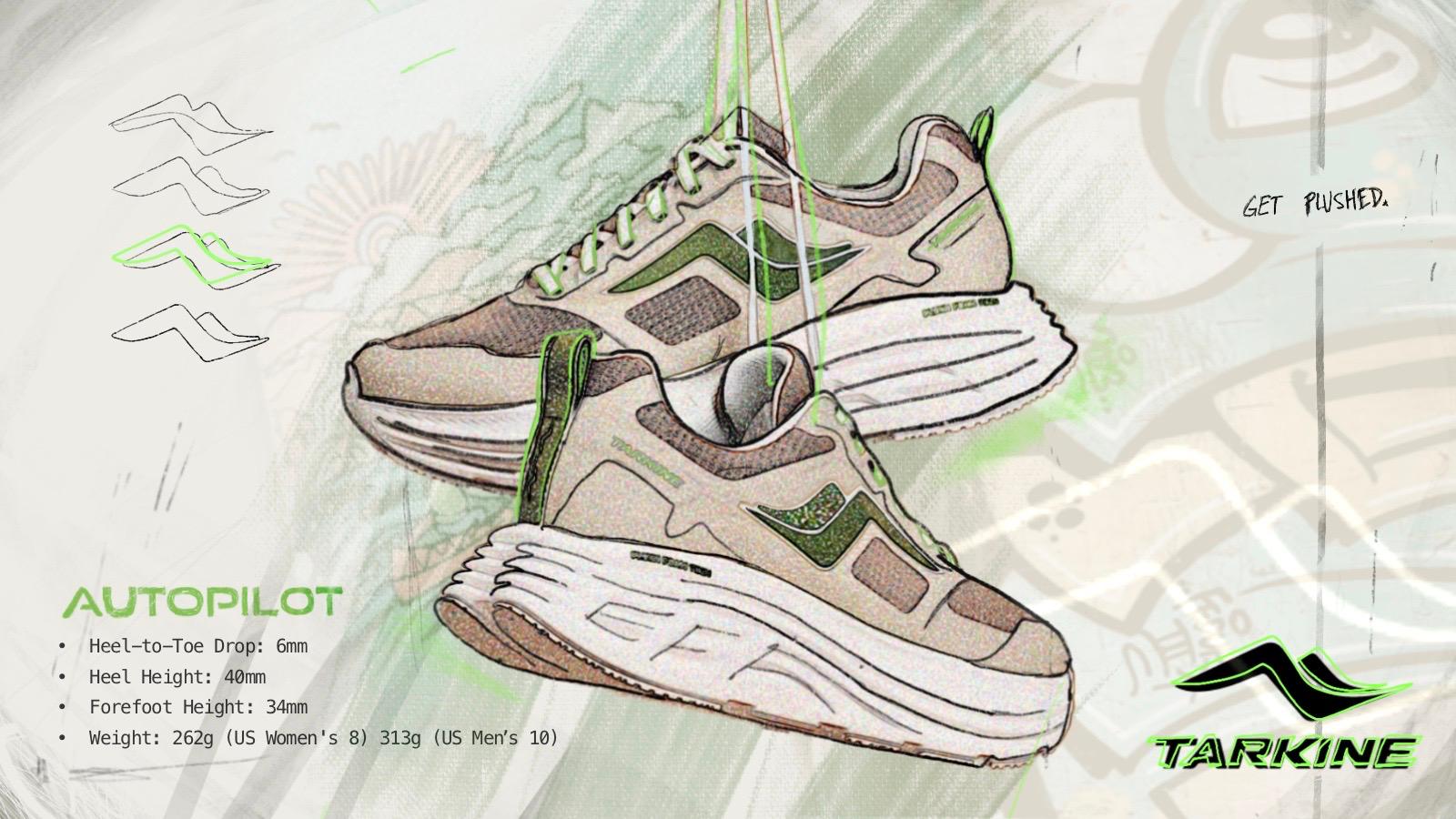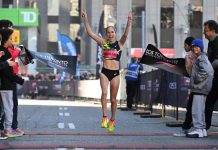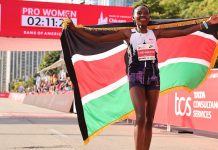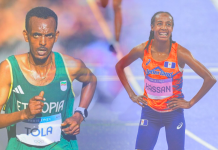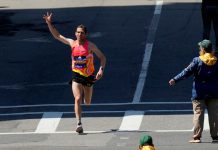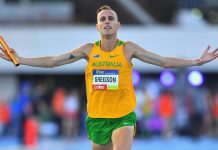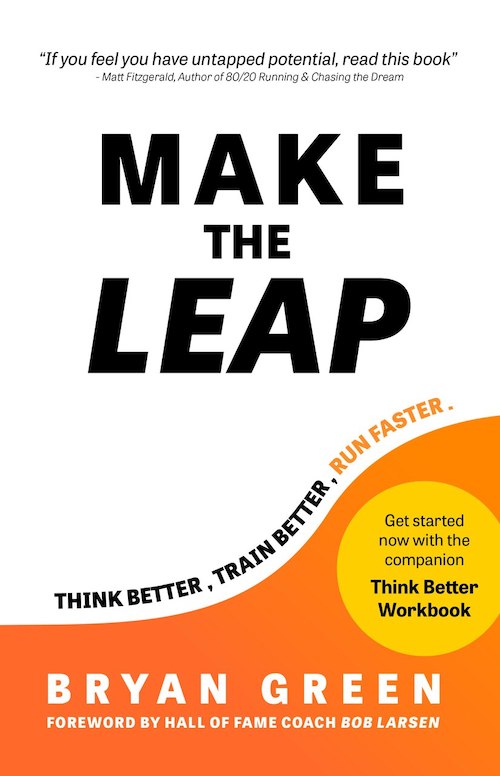By Brett Davies
At the Olympics of 1972, the men’s 5000m final saw Lasse Viren (FIN) complete the first of his Olympic 5000m/10,000m distance doubles (1972 & 1976) against a quality field which came down to an enthralling battle over final 4 laps.
Lasse Viren was part of a new generation of ‘Flying Finns’. In the 1920s and ’30s, Finland’s Ville Ritola, Taisto Maki, Hannes Kolehmainen, Harri Larva and of course the legendary Paavo Nurmi dominated distance running, winning Olympic medals and smashing world records. In the early 1970s, Viren, Juha Vaatainen, Pekka Vassala, Tapio Kantanen and a young Martti Vainio were developing under very intensive training programs devised by the likes of Rolf Haikkola and Aulis Potinkara.
Viren had been at BYU in the US on a scholarship but went home after a year. He joined the local police force in Myrskyla and trained daily on the extensive forest trails around his town. In 1971, he went to the European Championships on home soil in Helsinki, but was only 7th in the 5000m behind Vaatainen (who also won the 10,000m).
Haikkola lifted the intensity of Viren’s training and the 23 year-old had developed into a world class athlete. He broke the world 2 mile record (8.14.0) in Sweden a month before the Games and was clearly ready to mix it with the best in Munich. Viren won an eventful 10,000m final, outkicking the Belgian Emiel Puttemans. Despite a mid-race fall, he recovered, made a long run for home from the 9400m mark (he covered the last lap in 56.4) and beat Ron Clarke’s world record by a second. He was in superb condition and on target for his goal of the distance double. He was joined by Vaatainen for the final.
Viren was up against reigning champion Mohammed Gammoudi (TUN). The 34 year-old veteran was running in his final Games and would be a tough opponent. He triumphed at high altitude in Mexico City four years before and was part of the epic race against Ron Clarke and Billy Mills (USA in Tokyo 1964, where he and Mills clung to Aussie Clarke’s relentless pace, and kicked past Clarke, only to lose to Mills in the last 30 m. His fall and DNF in the Munich 10,000m was a devastating blow, as he was in very good form. He was determined to redeem himself and bow out a champion
Embed from Getty Images
Another seasoned veteran was Harald Norpoth (FRG). He was a medallist from Tokyo also (5000m, silver) and had broken the 2000m record (4.57.8) in 1966 and was the first to run under 5 minutes for the distance. With his speed and experience, as well as the psychological boost of competing in front of his home crowd, the 30 year-old would an outside medal chance.
The three British athletes were all very well-credentialled and among the favourites. Ian Stewart was the Commonwealth 5000m Champion. He had outkicked countryman Ian MCafferty in Edinburgh in 1970 and also claimed the scalps of legends Kip Keino and Ron Clarke. He was also the European 5000m Champion in 1969 and was a very good cross country runner. Stewart’s fellow Scotsman McCafferty was narrowly beaten by Stewart in Edinburgh and was in great form. He had recently run a PB (13.19.66) in London, chasing Dave Bedford. Bedford was the European record holder in the 10,000m and ran one of the fastest 5000m of all time (13.17.21) when beating McCafferty in London, but was disappointing in the Munich10,000m final. After leading mid-race, he faded to 6th. Much like the 1971 European Championships – where he also finished 6th – he was found wanting for pace at the business end of the race. Bedford would need to make it fast early to give himself an opportunity of finishing with a medal.
Puttemans would be a threat to Viren also. He had run the rail-thin Finn close in the 10,000m and he had broken the 2 mile world record the previous year. He was probably better suited to the 5000m and the smooth-striding 24 year-old was an athlete on the rise.
Another of the favourites in this race was a 21 year-old American prodigy called Steve Prefontaine. ‘Pre’ as he was known, was from Oregon University and grew up less than 200km south of his alma mater in Coos Bay on the Pacific coast, so was considered more-or-less a local.
Pre dominated NCAA distance running, on the track and cross country (7 cross country titles, 7 track titles and multiple records) and was the charismatic star of Bill Bowerman’s squad of elite athletes that were a major force in collegiate athletics in the early ’70s. Bowerman was a notoriously hard task master, and in Prefontaine, he found a kindred spirit. Pre was a precociously talented runner with a passion for the sport and a fiercely competitive nature. Prefontaine invariably led the distance squad in sessions on the track or on runs on the numerous local forest trails in the area. Bowerman would often have to rein in Prefontaine and attempt to get him to ease off, such was his tendency to push himself to his absolute limit. The two men would form a very close bond in their few years together.
Prefontaine was in form for the trials at home in Eugene, though he had some pretty solid opponents. Chief among them was 35 year-old 1968 Olympic steeplechase bronze medallist, George Young. Young had come out of retirement and his recent 3.59 mile indicated he was in good shape. In a much-hyped race, Pre blew away his opponents, with aggressive mid race surges and kicked home, half the length of the straight in front of Young, running an American record 13.22.8. Pre was full of confidence and was part of an exceptional US distance running team, which included Young, Dave Wottle, Jim Ryun and Frank Shorter.
It would be remiss not to mention that the Munich Games were subject to a brutal terrorist attack which cast a pall over the entire event and almost led to its cancellation. In the wake of the six day war between Israel and Palestine in 1967, there were terrorist groups and ‘lone wolf’ terrorists who wrought havoc throughout the world in the years after the conflict. There were several planes hijacked and Sirhan Sirhan assassinated US Senator Robert Kennedy in 1968. Palestinian group Black September stormed into the Israeli Olympic Team’s rooms in the Village, shot two athletes dead and kidnapped eight.A bungled rescue attempt by unbelievably inept German security forces led to the death of five of the terrorists and all of the hostages. With tensions once again at boiling point in Gaza, 52 years later, security has been beefed up for the Paris Games. French security forces have already shut down a terrorist attack planned for the Games.
The events eventually went ahead and the 5000m was held in front of a packed stadium that had already witnessed a riveting Men’s 1500m final, where Viren’s countryman Vassala had held off reigning champion Kip Keino (KEN) and Rod Dixon (NZL) to win in 3.36.32, while covering the final 800m 1.49.0. There was another medal won by Tapio Kantanen in the steeplechase (bronze)earlier in the Games. The Marathon field had left the stadium and would return within the next hour and a half, with Frank Shorter taking the title (though he was beaten into the stadium by a prankster and non-competitor who was soon identified as an imposter).
The thirteen finalists nervously stood at the start for this much looked-forward-to event. Absent from this stellar field was 10,000m bronze medallist Miruts Yifter. He missed his heat after he had either gotten lost in the stadium somewhere or had an urgent trip to the toilet and was too late to get to the starting line. The tiny Ethiopian (an eventual double champion in the 5000m/10,000m in Moscow 1980) would certainly have made things interesting.
The race began at a moderate pace (the first lap in around 68 seconds – 14.10 pace) with the Soviet athlete Nickolai Svirdov leading through 1000m in 2.46.26, with Viren content to sit at the back of the field. Viren took over after four laps and after 2000m (5.32.61), Bedford loped to the front of the pack, though didn’t increase the pace and there was quite a bit of jostling in the tightly bunched pack, as the pace slowed before the halfway mark. Javier Alvarez (ESP) led through 3000m in 8.20.24, and Viren, Pre and Puttemans began to move towards the front. Sviridov took over again at 3200m and Pre loomed up on the Russian’s shoulder with 4 laps to go and made the first serious move of the race, as he took the lead with his characteristic pugnacity and determination.
Pre’s 63 second lap stretched the field and Viren sat ominously on the American’s shoulder and still looked comfortable. Pre continued to ramp up the pace. At 4000m (10.59.87) the lead pack was down to five (Prefontaine, Viren, Gammoudi, Puttemans and Stewart) and with 2 laps to go, Viren attacked and went past Pre into the lead.
There was another surge to the front by Prefontaine with 600m left and at the bell, Viren again took the lead from a seemingly exhausted Prefontaine, who had covered the 2 laps between 3800m and 4600m in 2.01, in a desperate attempt to burn off Viren, Gammoudi et al. With 300m left, Gammoudi kicked hard and into the lead and Prefontaine ran up to the Tunisian champion’s shoulder. When Gammoudi surged again with 200m to go, Pre dropped back slightly and Viren tucked in behind Gammoudi, ready to pounce.
With 130m to go Pre attempted to move past Viren, but Viren counter-attacked and moved up to Gammoudi and kicked hard with 100m to go and into the lead. The Tunisian veteran couldn’t respond and Viren had a 5 metre lead with 50m to go. Prefontaine held onto third but was completely spent and Stewart began to gain ground on the American.
Viren crossed the line a champion in 13.26.42 with Gammoudi second in 13.27.33. Prefontaine, completely drained and hanging on, seemed to stumble slightly, as Stewart swept past the brave American to capture the bronze in 13.27.61. Prefontaine finished a gallant 4th in 13.28.25.
It was one of the classic events of the Munich Games. Viren had run the final 2km in 5.05.8, the last 4 laps in 3.59.2, the final 1km in around 2.26 and the last lap in just over 56 seconds. He had emulated the great Emil Zatopek, Vladimir Kuts and and countryman Hannes Kohlmainen to become the fourth man to win the 5000m/10,000m double at an Olympic Games.
He was dogged by allegations of blood doping, though was never found to have committed any doping offence. He broke Ron Clarke’s world 5000m record just days after the Games, but experienced indifferent form in the years between Munich and Montreal. In the 1974 European Championships the champion Finn was disappointing. He was blown away in the 5000m by Brendan Foster (GBR), who ran a 2.02 800m in the middle of the race to destroy his rivals and win comfortably. Viren was third, after a 7th place finish in the 10,000m.
Viren came back spectacularly 2 years later to win his second Olympic distance double in Montreal. He also ran 5th in the marathon. In his final Games in Moscow in 1980, he ran a creditable 5th in the 10,000m, where he and his silver medal-winning compatriot Kaarlo Maaninka staged an epic battle with Ethiopian trio Yifter, Mohammed Kedir and Tolossa Kotu (Maaninka was also third in the 5000m and has sinced admitted to blood doping during his career).
Gammoudi ran well at national level for a few more years, retired has been a national hero in Tunisia. His revolutionary training methods are still used to this day. The famous ‘Gammoudi Session’ is regularly used by many elite athetes. Gammoudi regularly ran the session of 3 x 3000m, where the pace was increased after each 1km section. He would run 80 second laps for the first km, then 64-65 in the second km and the final 1km in around 60 seconds per lap. Aussie star Craig ‘Buster ‘ Mottram would run a modified and more intense version of this session (Two reps, with the first km in 2.50, 2nd in 2.40 & 3rd in 2.30). For Mottram and former coach Nic Bideau, this workout was a key condoning session prior to big races. Gammoudi has been an influential figure in athletics and has an extraordinary legacy in the sport.
Ian Stewart was disappointed with the bronze and blamed a collision with Prefontaine for the fact he lost ground in the final two laps. He was a leading international for another few years and was European Indoor 3000m champion in 1975 and he followed that up a few weeks later with his greatest career performance. In Rabat at the World Cross Country Championships, he tracked US star Bill Rodgers’ suicidal pace, before eventually outkicking Spaniard Mariano Haro for a magnificent win. He finished 7th in the 5000m in Montreal 1976, just 2.89 behind Viren in one of the most closely-fought distance finals in Olympic history. Stewart broke the world 10 mile record in 1977 (45.13) and retired the following year, though came back more than a decade later to become a force in Masters athletics.
Puttemans, who was 5th in the final, would go on to run multiple world records, though would miss out on silverware in subsequent Olympic events. After the Olympics he ran world records in the 5000m (13.13.0) and 3000m (7.37.6). He would also win a European Indoor title over 3000m and break world records for the 3000m and 2 miles indoors.
Norpoth finished 6th and he continued for another year in the sport, running a 5000m PB of 13.20.49 before retiring. He’s still amongst the fastest ever Germans over 2000m.
The other Brits had mixed success after the Games (McCafferty was 11th and Bedford 12th). McCafferty was hugely disappointed and faded from the sport. Bedford had outstanding success the following year, when he smashed Viren’s world record by almost 8 seconds at London’s Crystal Palace. From then on, however, Bedford began to experience a serious form slump and major injuries, such as a severe achilles problem, The injuries were attributable to Bedford’s punishing training regime, where he would regularly run 240km per week and as many as 300km per week.
He had a disastrous Commonwealth Games campaign in 1974, finishing well out of the medals and had a few barren years, before regaining some form later in the decade, though he failed to recapture his glory days. Much like his contemporary and fellow British record holder Brendan Foster, Bedford became a race director. He was the long-serving director of the London Marathon and he is Chair of World Athletics’ Road Running Commission and is the UK representative of the World Athletics Cross Country Committee.
Prefontaine was disillusioned by his failure to win a medal in Munich continued on the following couple of years and achieved extraordinary success. By May 1975, Prefontaine had broken every US record from 2000m to 10,000m and he was building towards Montreal 1976, where he would hopefully get his rematch with Viren and bring home the gold. Prefontaine had maintained the volume and intensity of his training and had a range of PBs from a 3.54.6 mile to a 27.43.6 10,000m. It was off the track where Pre experienced many problems
An outspoken critic of the stifling, overbearing Amateur Athletics Union, Pre regularly clashed with the sport’s officials. The authorities placed restrictions on athletes’ travelling and competing schedules and Prefontaine bristled at such restrictions and was in constant arguments about stipends paid to athletes and where and when athletes were permitted to compete.
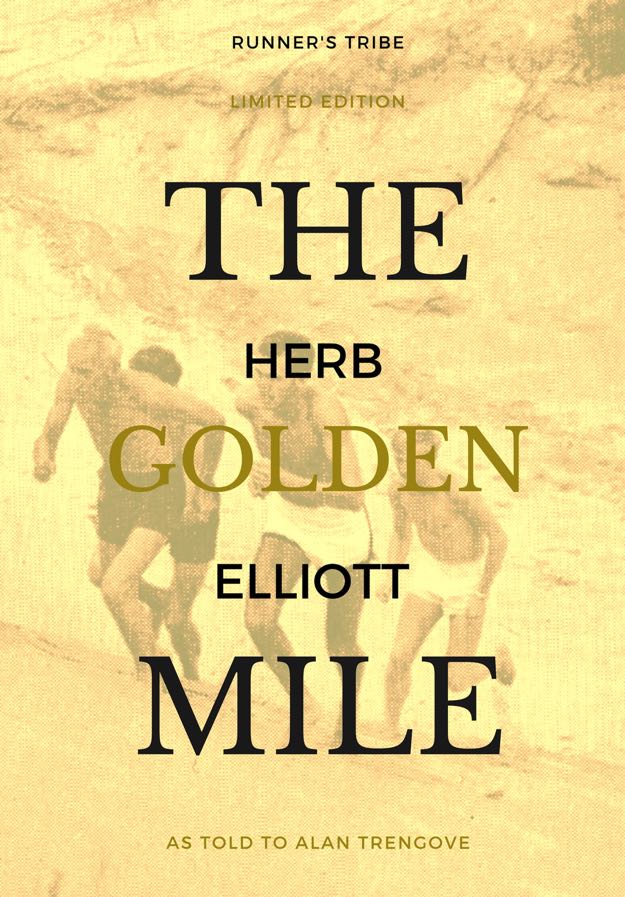
In May 1975, the life of one of America’s great distance athletes came to a tragic end. Prefontaine won a 5000m race at Eugene’s Hayward Field on the 30th of May against locals and some Finnish internationals and had partied with his fellow athletes until after midnight, before dropping a friend home and then heading for his home. Pre’s car mounted the curb of a suburban street, hit a rock and flipped, trapping the 24 year-old under his car and he was crushed to death. After a post-mortem examination in the Lane County Morgue, he was found to have a blood alcohol level almost double Oregon’s legal limit.
America’s athletics community was hit hard by the news and many teammates, coaches, rivals and fans were devastated. Pre was, at the time, America’s most popular athlete and, in subsequent years, his legend continued to grow. Much like fellow Pacific North-West icons such as Jimi Hendrix and Kurt Cobain, his untimely death was emblematic of the tragedy of a promising life cut short.
Pre’s legacy is huge. The annual Prefontaine Classic is one of the biggest track meetings in the world, and he is still cited as one of the most inspirational figures in the sport in the US. There have been two biopics of Prefontaine, Prefontaine (1997), with Jared Leto and Without Limits (1998), with Billy Crudup giving perhaps a slightly more convincing performance than Leto as Pre.The Munich 5000m, of course, features as a pivotal moment in both movies and Without Limits also features a memorable cameo from the late great cross country and track star Pat Porter as Viren.
It’s interesting to speculate on how Pre’s career would have gone. He may have moderated his tactics and training to deal with the stars of the Montreal Games, such as Viren, Quax, Dixon, Foster and Lopes. With very solid mile speed, could he have developed a ‘sit-and-kick’ approach, rather than his patented mid-race surges, which can leave an athlete fatigued and vulnerable to the kickers? Would he have continued on to run in the inaugural World Championships in 1983 and at his home Olympics in LA ’84, where he would still have been only 33? Could he have successfully moved to the marathon and taken on contemporaries like Lopes, or emerging young guns such as de Castella, Salazar and Seko?
Prefontaine at 73 would no doubt still be involved in the sport at some level. Perhaps he would be guiding grandkids into the sport or commentating, or coaching. He might still be out there on the forest trails, a little slower perhaps, but still grinding out the miles. Pre, it should be noted, was involved with Coach Bowerman and a keen young local amateur athlete and budding businessman called Phil Knight, developing prototypes of running shoes for a small business they called Nike. Pre might still be living comfortably in Eugene, raking in those Nike share dividend cheques and sharing his wisdom and passion for the sport he loved with the young athletes that flock to Eugene – the Mecca for American runners.
As for Viren, he is one of two men in Olympic history to have achieved the ‘double double’ of 5000m/10,000m gold medal wins (Sir Mo Farah of course shares this distinction with his wins in 2012 & 2016).
The now 75 year-old champion remains in his home town with his wife and has experienced a varied career after ending his competitive athletics career in 1981. He worked for the Union Bank of Finland until the recession of the late ’80s and worked for a family business briefly, then, much like fellow distance stars of the 1970s -John Walker, Eamonn Coghlan and Sebastian Coe – he moved into politics until retiring a few years ago. He laments the decline in Finnish athletics, yet is impressed with how athletics has progressed globally. Viren, it should be noted, has vociferously denied the doping allegations and is one of the greatest track distance runners of all time.
The 5000m in Munich is still an all-time classic and Viren’s phenomenal run still stands up as an example of both incredible toughness, determination and tactical mastery.
1972 Munich Olympic 5000m Final:
- Lasse Viren (FIN) 13.26.42
- Mohammed Gammoudi (TUN) 13 27.33
- Ian Stewart (GBR) 13.27.61
- Steve Prefontaine (USA) 13.28.25
- Emiel Puttemans (BEL) 13.30.82
- Harald Norpoth (FRG) 13.32.58
- Per Halle (NOR) 13.34.38
- Nikolai Sviridov (URS) 13.39.31
- Frank Eisenberg (GDR) 13.40.84
- Javier Salgado (ESP) 13.41.83
- Ian McCafferty (GBR) 13.43.20
- David Bedford (GBR) 13.43.22
- Juha Vaatainen (FIN) 13.53.84
The author would like to thank The Observer, The New York Times, The Guardian Online, Let’s Run.com, Athletics Weekly, Runners World, World Athletics.org and the BBC.




